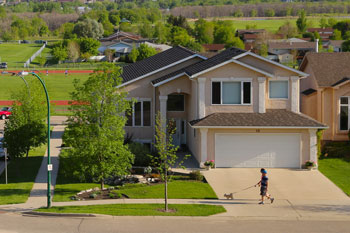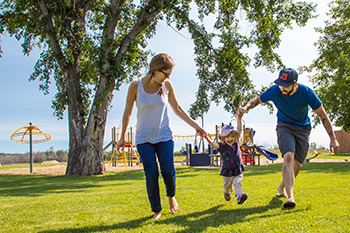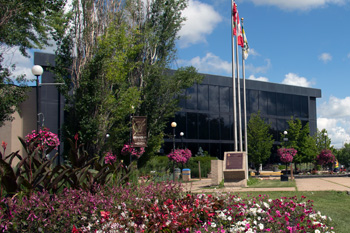Q. Can 911 identify my location when I call from my cell phone?
A. Yes. 911 will have the capability of knowing the approximate longitude and latitude of your location. However, it is still very important to give dispatchers your exact location.
Q. Can 911 identify my location when I call from a land line or home phone?
A. Yes. Your information such as address, name and phone number will display for us. If you call from a business with multiple lines, we will be able to tell the address it is coming from but not the phone extension.
Q. What will happen if I dial 911 by accident?
A. If you dial 911 by accident, please stay on the line to speak with someone. 911 will call you back if you hang-up and attempt to speak with someone. If there is no answer from where you are calling from, 911 will dispatch police to that location.
Q. What happens with prank 911 calls?
A. Making prank phone calls to 911 endangers the lives of others who really need help. Abusing 911 is a criminal offence and carries a maximum fine of $2000.
Q. What do I do if my cell phone will not let me dial out after calling 911
A. Some cell phones will remain locked for a time. If it does not unlock on its own after a reasonable amount of time, contact your cell phone provider for further direction.
Q. What if I don't speak English?
A. 911 has an outside agency hired to act as interpreters. If a dispatcher is unsure of the language a caller is speaking, the agency can help with that as well.
Cell Phone F.A.Q.
A. Wireless carriers provide further location identification information for 9-1-1 calls from mobile phones.
E9-1-1 Phase II
Q. How has 9-1-1 service for Canadian cell phone users changed since February 1, 2010?
A. The wireless industry and the public safety community have provided further location identification information for Enhanced 9-1-1 (E9-1-1) service for cell phone users. Previously, a 9-1-1 call taker would have received the cellular phone number and the location of the nearest cell site or cell tower when a call was placed to 9-1-1 from a cell phone. Now, in addition to the phone number, the call taker will receive more precise information based on the longitude and latitude coordinates of where the handset is located. This new technology provides the approximate location of the mobile handset but does not provide an exact “pinpoint location”.
Q. Is the new service available everywhere in Canada?
A. The new E9-1-1 service is now available in most parts of the country where wireline E9-1-1 service exists. The wireless service providers have deployed the technology across their coverage areas, however, there remain several Public Safety Answering Points (PSAPs), or 9-1-1 call centres, that are unable to accept the new location information and complete end-to-end testing with the wireless carriers. The wireless industry and the public safety community are working together as fast as possible to make sure the enhanced 9-1-1 service is available in all areas of the country where wireline E9-1-1 service exists. Cell phone users should be prepared to provide a 9-1-1 call taker with their exact location as best they can.
Q. How will I know if my service provider is providing this new enhanced 9-1-1 service in my area?
A. You may have already received, or will receive, information about the enhancements to 9-1-1 from your wireless service provider. Customers are encouraged to contact their wireless service provider with any questions about E9-1-1 service in their area.
Q. What if I don’t want my location information supplied to the 9-1-1 centre? Can I turn off this feature from my cell phone?
A. Most cell phones on the market today are equipped with GPS functionality. GPS functionality can be turned off by cell phone users. However, the 9-1-1 call may override GPS functionality that has been turned off on a cell phone. In addition, some wireless service providers may employ non-GPS technology known as triangulation, or may be using a combination of GPS and triangulation, to provide the enhanced location information. Even though the 9-1-1 call taker may now receive handset location information, it is important for cell phone users to remember they should always try to assist the 9-1-1 call taker by providing their exact location as best they can.
Q. Is this new service dependent on what kind of cell phone I have?
A. Most cell phones on the market today are designed to automatically allow the provision of handset location technology for calls to 9-1-1. Customers should contact their wireless service provider if they have any questions about their handset and/or the location identification technology used by their provider.
Q. Do I have to make any changes to my cell phone in order to receive this new service?
A. No. Most cell phones on the market today are designed to automatically allow the provision of handset location technology for calls to 9-1-1. Customers should contact their wireless service provider if they have any questions about their handset and/or the location identification technology used by their provider.
Q. Will this work on my pre-paid phone?
A. Yes. The location identification information will be provided to the 9-1-1 call taker if you are using either a prepaid or postpaid service.
Q. Can I still call 9-1-1 from a deactivated cell phone?
A. Possibly. In some cases, a call to 9-1-1 from a deactivated cell phone will reach a 9-1-1 operator. However, because that phone is not associated with any particular wireless service provider, the 9-1-1 operator will not be supplied with a dialable phone number. In the event of a call disruption, the call taker would not be able to call back. The operator may receive information about the cell site or cell tower that is transmitting the call, but they will not be provided with longitude and latitude coordinates.
Q. What happens when someone calls 9-1-1 from a cell phone in areas where there is no 9-1-1 coverage?
A. Not all local governments in Canada operate 9-1-1 systems. Wireless carriers endeavour to route 9-1-1 calls to an appropriate call-taking agency (the local police department, for example) in areas where no wireline 9-1-1 service exists. However, if you routinely use your mobile phone in areas where a 9-1-1 system does not exist, you should know the phone numbers for local police, fire and ambulance services.
Q. How many calls are made to 9-1-1 from cell phones each year in Canada?
A. It is estimated that more than 6 million calls a year are to placed to 9-1-1 or other emergency numbers from cell phones each year in Canada.
Q. Should I pre-program 9-1-1 into my cell phone?
A. No. Do not pre-program 9-1-1 into speed-dial. Unintentional emergency calls from mobile phones can occur if you accidentally press a speed-dial key that has been pre-programmed to call 9-1-1. In some instances, you may not even be aware that the emergency key has been pressed. Check your phone’s manual or contact your retail dealer to ensure any pre-programmed emergency numbers have been disabled. In parts of the country, it is illegal to pre-program 9-1-1 into speed-dial.
Q. What should people keep in mind when calling 9-1-1 from their cell phones?
A. Remain calm and speak clearly. Identify which emergency services you require – police, fire or ambulance – and be prepared to provide the following information: What is your 10-digit mobile phone number? What is the location? What is the emergency? Please remain on the line to provide additional information if requested by the call-taker. Do not hang up until the operator advises you to do so. After hanging up, leave your mobile phone turned on in case the operator must call you back.
Q. Can I send a text message to 9-1-1?
A. No. Currently, 9-1-1 call centres are not equipped to receive text messages.







